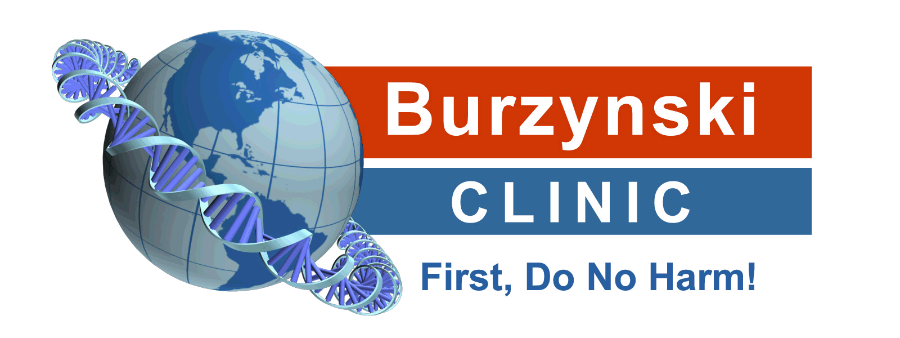24.8+ Year Survival in Low-Grade Glioma Case Series | Burzynski Clinic
Saturday, August 09, 2025 | By: Burzynski Clinic
Did you know that innovative treatments like Antineoplaston therapy are offering hope to patients diagnosed with progressive, multicentric, low-grade gliomas? While survival outcomes can vary, some patients have experienced promising results with this groundbreaking approach, which challenges conventional cancer management strategies. In this blog post, we’ll explore the science behind these non-toxic therapies, highlight remarkable patient stories, and emphasize the importance of personalized treatment plans for long-term disease management. Every patient and their families deserve to know about the potential benefits of individualized care.
Understanding Midline Low-Grade Glioma
Midline low-grade gliomas (MLGGs) are a unique and complex category of brain tumors. These tumors typically arise in the midline structures of the brain, particularly in the brainstem, thalamus, or cerebellum. Despite being classified as low-grade, MLGGs can exhibit progressive behavior and complicate treatment outcomes. Understanding the biology and characteristics of these tumors is crucial for developing effective treatment strategies.
Characteristics of Midline Low-Grade Glioma
Low-grade gliomas, unlike high-grade gliomas, generally progress slowly and are less aggressive. However, their location and the surrounding functional brain tissue play a significant role in treatment decisions. Patients often experience symptoms such as headaches, seizures, or neurological deficits depending on tumor location, which can significantly impact quality of life.
The Prognosis
Traditionally, the prognosis for patients diagnosed with low-grade gliomas has been variable. While some patients may survive for many years with minimal intervention, others may experience a more aggressive course. Factors influencing long-term survival typically include tumor genetics, patient age, and the tumor's responsiveness to treatment.
Antineoplaston Therapy: A Game Changer in Cancer Treatment
Antineoplaston therapy, developed by Dr. Stanislaw Burzynski, utilizes naturally occurring peptides and derivatives to combat cancer cells. This innovative treatment is based on the premise that certain compounds can leverage the body’s immune response to target and destroy malignancy without the side effects associated with conventional treatments such as chemotherapy and radiation.
What Are Antineoplastons?
Antineoplastons are a group of compounds derived from urine and blood serum. They are believed to modulate cellular signaling pathways and encourage apoptosis, or programmed cell death, in cancerous cells while simultaneously supporting healthy cell function. The therapy consisted of Antineoplaston A10 and AS2-1, which have been used in various clinical trials, showing promise particularly in cases involving low-grade gliomas.
Clinical Evidence of Effectiveness
In a remarkable series published in the Annals of Case Reports & Reviews, three patients diagnosed with progressive, multicentric midline low-grade glioma showcased long-term survival when treated with Antineoplastons. The study calculated a median survival of over 24.8 years, far exceeding conventional expectations. Patients not only managed their symptoms effectively but also maintained a good quality of life.
Personalized Cancer Care: The Burzynski Clinic Approach
At Burzynski Clinic, personalized care is at the forefront of treatment philosophy. Every cancer patient's journey is unique, and so are their treatment plans. This is where personalized cancer treatment plans become essential.
Patient-Centric Approach
Through extensive consultations, diagnostic testing, and patient history evaluations, the clinicians at the Burzynski Clinic create tailored treatment plans that consider the individual’s specific needs, cancer type, and personal circumstances. This method ensures that each patient receives the most appropriate and effective therapy for their condition.
The Science Behind Personalized Cancer Treatments
The importance of personalized cancer care cannot be overstated. Advances in genomics and molecular medicine have enabled clinicians to match therapies with specific tumor characteristics better. Understanding the genetic mutations and biomarkers present in glioma can help select the most effective non-toxic treatments while minimizing harmful side effects.
Ongoing Research and Future Directions
Innovations in cancer research continue to pave the way for developing advanced therapies like Antineoplastons. As more data emerges from clinical trials and retrospective studies, the medical community gains deeper insights into treatment modalities that can aid long-term survival, particularly in challenging tumor types such as MLGG.
Engaging the Patient and Caregiver Community
A critical component of successful cancer treatment is engagement between healthcare providers, patients, and caregivers. With the complexities surrounding cancer treatment, it is essential to foster open communication and care partnerships that facilitate better outcomes.
Importance of Support Networks
Support systems play a significant role in assisting patients through their cancer journey. Encouraging family involvement, building networks with fellow patients, and engaging in community support can enhance emotional resilience and mental well-being. Being part of a supportive community aids patients in navigating the emotional rollercoaster often associated with cancer diagnosis and treatment.
Taking Action: What You Can Do
If you or a loved one is facing a diagnosis of midline low-grade glioma, consider exploring new treatment options like Antineoplaston therapy. Education on your condition is crucial, and understanding all available treatment avenues can empower you to make informed decisions regarding your care.
In summary:
Antineoplaston therapy has shown promising results for patients with low-grade gliomas, offering a chance for long-term survival and better quality of life. If you or a loved one are facing this challenge, Dr. Stanislaw Burzynski at the Burzynski Clinic in Houston, TX, can help guide you through treatment options. Book an appointment today to learn how this innovative therapy could make a difference in your journey.

